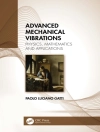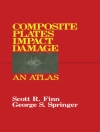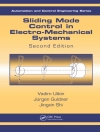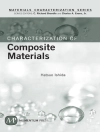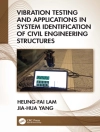It is our pleasure to present these proceedings for “The Aerodynamics of Heavy Vehicles II: Trucks, Buses and Trains” International Conference held in Lake – hoe, California, August 26-31, 2007 by Engineering Conferences International (ECI). Brought together were the world’s leading scientists and engineers from industry, universities, and research laboratories, including truck and high-speed train manufacturers and operators. All were gathered to discuss computer simu- tion and experimental techniques to be applied for the design of the more efficient trucks, buses and high-speed trains required in future years. This was the second conference in the series. The focus of the first conference in 2002 was the interplay between computations and experiment in minimizing ae- dynamic drag. The present proceedings, from the 2007 conference, address the development and application of advanced aerodynamic simulation and experim- tal methods for state-of-the-art analysis and design, as well as the development of new ideas and trends holding promise for the coming 10-year time span. Also – cluded, are studies of heavy vehicle aerodynamic tractor and trailer add-on – vices, studies of schemes to delay undesirable flow separation, and studies of – derhood thermal management.
表中的内容
Keynote Papers.- Bluff Body Flow Research with Application to Road Vehicles.- Climate Change and the Energy Economy.- Flow Field Characteristics.- Large Eddy Simulations and Acoustic Predictions in Automotive Applications.- Validation of the Immersed Boundary CFD Approach for Complex Aerodynamic Flows.- Experimental Characterization of the Unsteady Flow Field behind Two Outside Rear-View Mirrors.- Investigation of Buoyancy Driven Flow in a Simplified Full Scale Underhood – PIV and Temperature Measurements.- Investigation of Buoyancy Driven Flow in a Simplified Full-Scale Underhood – Numerical Study.- The Flow Environment of Road Vehicles in Winds and Traffic.- Separation Control for Drag Reduction.- Preliminary Experiments Applying Active Flow Control to a 1/24th Scale Model of a Semi-Trailer Truck.- Large Trucks Drag Reduction using Active Flow Control.- Flow Separation Control on Trailing Edge Radii using Single Dielectric Barrier Discharge Plasma Actuators: An Application to Vehicle Drag Control.- Adaptive Control of Post-Stall Separated Flow Application to Heavy Vehicles.- Investigation of Tractor Base Bleeding for Heavy Vehicle Aerodynamic Drag Reduction.- Drag Reduction on a Generic Tractor-Trailer using Active Flow Control in Combination with Solid Flaps.- Design Optimization Techniques Related to Vehicle Aerodynamics.- Advanced Aerodynamics and Cooling System Solutions for Higher Fuel Efficiency and Decreased Emissions.- Optimization of Aerodynamic Properties of High-Speed Trains with CFD and Response Surface Models.- Design Considerations for Maximizing Cooling Package Performance.- Optimization and Correlation of a Class 8 Truck Cooling System.- Train Aerodynamics.- Aerodynamic Improvements and Associated Energy Demand Reduction of Trains.- The use of Aeronautical Experimental Facilities and Measurement Techniques for the Aerodynamic Investigation of High Speed Trains.- Reduction of Skin-Friction Drag on a Generic Train Configuration.- Head Pressure Effects of Trains and Locomotives – Engineering Calculation Approaches for Homologation Purpose.- Numerical Analysis for Aerodynamics of High-Speed Trains Passing Tunnels.- Poster Session.- A Study of the Influence of Aerodynamic Forces on a Human Body near a High-Speed Train.- Application of CFD to Rail Car and Locomotive Aerodynamics.- Data Acquisition of a Tractor-Trailer Combination to Register Aerodynamic Performances.- Automotive Testing in the DNW-LLF Wind Tunnel.- An Experimental Study of Tractor Base Bleed for Heavy Vehicle Aerodynamic Drag Reduction.- CFD, Numerical Methods and Application.- Application of High Fidelity Numerical Simulations for Vehicle Aerodynamics.- Scale-Adaptive Simulation in the Context of Unsteady Flow Simulations.- Computational Simulation of the GCM Tractor-Trailer Configuration.- Full-Scale Simulations of Drag Reduction Devices for Class 8 Trucks.- Applicability of Commercial CFD Tools for Assessment of Heavy Vehicle Aerodynamic Characteristics.- Detached Eddy Simulations of a Simplified Tractor/Trailer Geometry.- A Hybrid RANS/LES Turbulence Model for use in the Simulation of Turbulent Separated Flows.- Vehicle and Tire Spray and Vehicle Interaction.- Spray from Commercial Vehicles: A Method of Evaluation and Results from Road Tests.- Experiments on Spray from a Rolling Tire.- Computational Simulation of the Flow Field of a Filter System inside Self-Ventilated Road Tunnels due to Heavy Vehicle Traffic.- Experiments and Calculations Relevant to Aerodynamic Effects during Highway Passing Maneuvers.- Drag Reduction.- Design & Test Techniques for Drag Reduction at Swift Engineering – A Racecar Manufactures Perspective.- Summary of Full-Scale Wind Tunnel Tests of Aerodynamic Drag-Reducing Devices for Tractor-Trailers.- A Fleet Operator’s Perspective on Commercial Vehicle Drag Reduction.- Class 8 Vehicle Fuel Savings using Sealed Single and Dual Open Aft Cavities.- A Novel Approach to Heavy Vehicle Drag Reduction.- European Truck Aerodynamics – A Comparison Between Conventional and Co E Truck Aerodynamics and a Look into Future Trends and Possibilities.- Advanced Experimental Methods for the Analysis and Aerodynamic Design of Heavy Vehicles.


